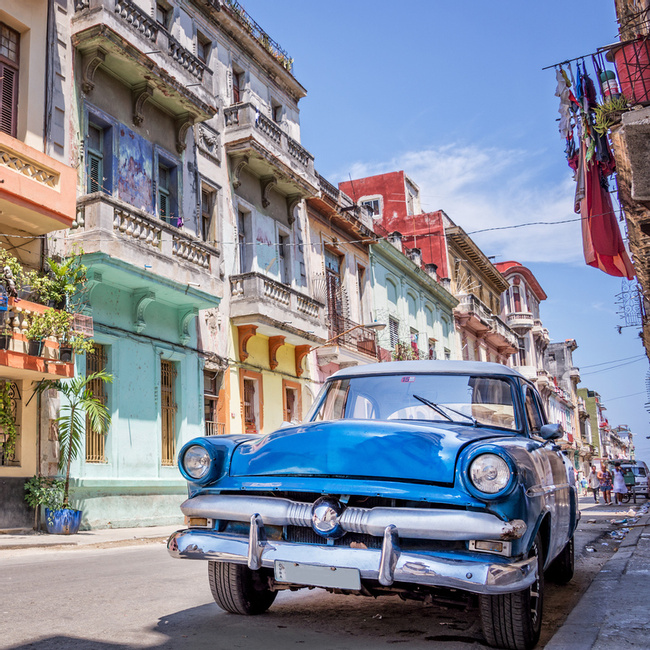- Travel Guides
Religion in Cuba
In the early 1990s, Fidel Castro lifted restrictions on practicing religion that had been in place since the 60s. The government’s relationship with freedom of religion is improving, but still far from friendly. To this day, religious organizations have to deal with government interference.

Catholicism in Cuba
When the Spanish arrived in Cuba, the indigenous people were forced to convert to Catholicism. To this day, Cuban culture associates Catholicism with oppressive Spanish rule.
Although Fidel Castro’s government was officially atheist from the 1960s until 1992, more than half of Cubans still consider themselves Catholic. But even the Cubans who identify as Catholic do not regularly attend Mass.
When Castro took over, he nationalized the Catholic Church’s property. For many years, practicing Catholics could not become members of the Communist party, and by extension could not work for the government.
In 1998 Pope John Paul II visited Cuba, inspiring a renewed enthusiasm for Catholicism. He also persuaded Castro to reinstate Good Friday as an official holiday.
Afro-Cuban Religions
Santería conflates Catholic saints with deities from western Africa. These African religions include Yoruba, which originated in Nigeria and Benin. It came to Cuba through the slave trade.
It is estimated that around 80 to 90 percent of Cubans consult with Santería priests, making it the most widely practiced religion in Cuba. Many Cubans believe equally in the powers of Santería and the Catholic Church, and do not perceive an inherent contradiction between the two belief systems.
(Go here to read our in-depth article about Santería.)
Virgin del Cobre (Our Lady of Charity) is the patron saint of Cuba, and is also a perfect example of Santería’s combination of holy figures from Catholicism and Yoruba. Santeras—people who practice Santería—consider this version of the Virgin Mary to be interchangeable with Ochun, the Yoruba goddess of love, femininity, and rivers.
There are other, less well-known African religions in Cuba.
• Abakuá originated in western Africa. It is a fairly secretive all-male society. Each member is assigned another member of the group to protect. These traditions survive in fairly marginalized parts of society. In ceremonies, practitioners wear elaborate costumes. They dress as devils called ireme, and conduct ceremonial dances led by a leader called a Morua. The Morua speaks in the Nigerian language of Ifik during ceremonies.
• Palo Mayombe is also called Palo Monte and Reglas de Congo (Reglas de Congo translates to “Gifts of the Congo”). Practitioners of Palo Monte pray to their dead ancestors for help. Similarly to Santería, the priests of this religion cast spells, but Palo Monte has a somewhat darker reputation.
Growing Protestant Churches
Around 5 percent of Cubans identify as Protestant. Baptists and Methodists are the strongest Protestant denominations in Cuba, and the Pentecostal Church has grown significantly in recent years. There is also a strong gender divide when it comes to church attendance—although men are active participants in Santería, very few attend Christian church services.
Although there are far fewer Protestants than Catholics and Cuba, there is evidence that the Protestant faction has more potential in the long-term. While many Cubans identify as Catholic, they often do not go to great lengths to demonstrate outward signs of their faith. Cuban Protestants tend to be more enthusiastic about attending church. Protestant services have more live drumming and singing, making them more similar to Afro-Cuban religious ceremonies.
Church and State
Cuba’s most prominent leaders have expressed a growing tolerance for religion. Raúl Castro has stated that he considered returning to the Catholic Church after a recent meeting with Pope Francis. As Fidel Castro has grown older he has spent more time with bishops from Russian Orthodox churches.
Raúl has proved a generally less authoritarian leader than his brother, and for this reason some speculate that religious freedom will continue to grow. Still, the current restrictions on religion mean that spiritually-based festivals and holidays are limited, but this does not at all take away from the vibrant culture of the Cuban people.
It's more than just having a good time or visiting beautiful places (although that's absolutely a part of it!), it's about being part of a unique experience that stays with you.



